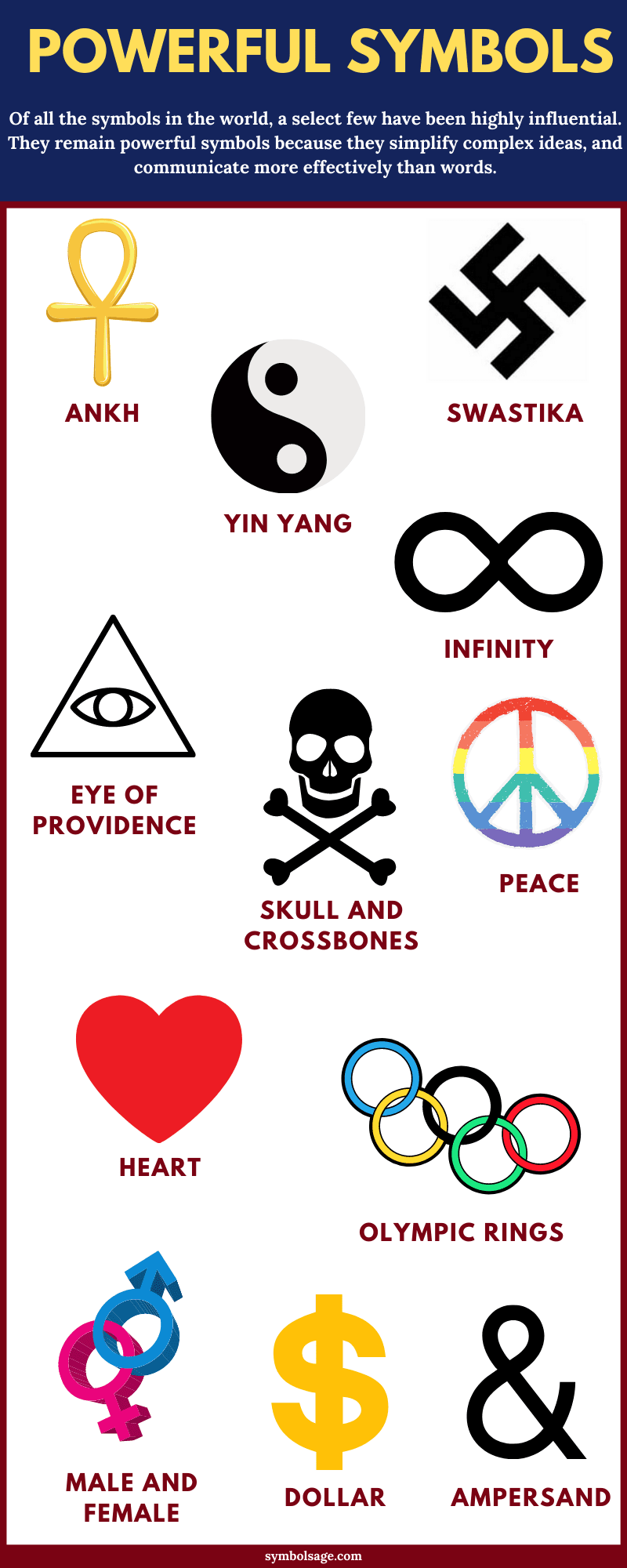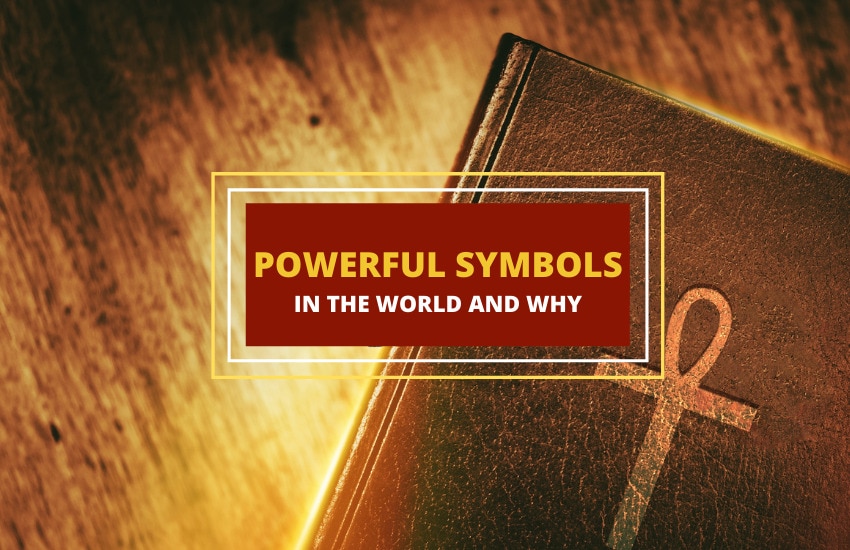
Table of Contents
For thousands of years, symbols have been used by different cultures around the world to represent their values and ideals. Some come from legends and mythologies, others from religion.
Many symbols have universal meanings shared by people from various backgrounds, while others have gained varying interpretations over the years.
Of these symbols, a select few have been highly influential, and continue to hold their place as some of the most powerful symbols in the world.
1. Ankh
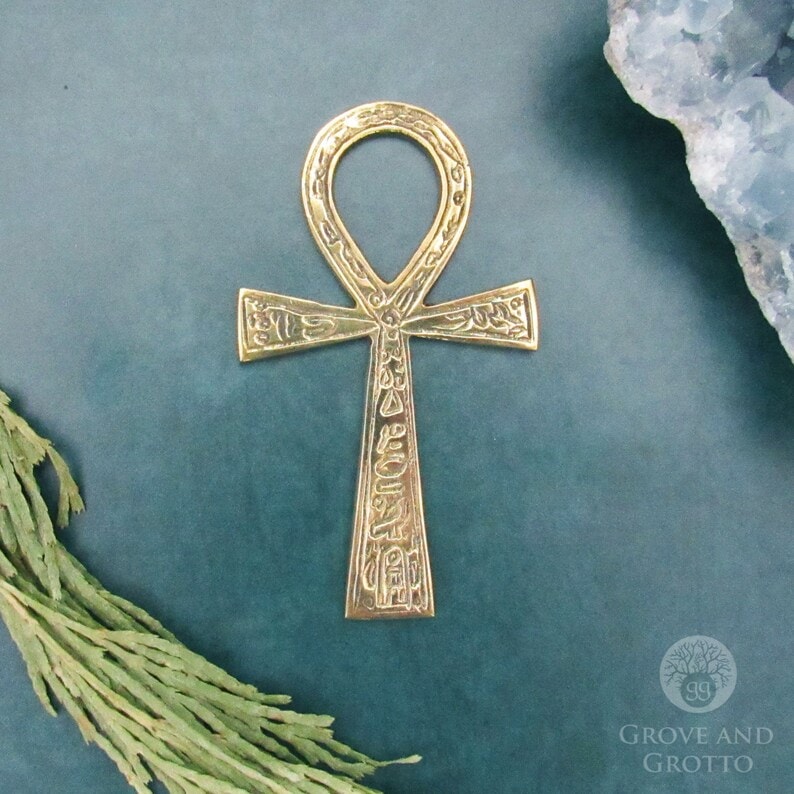
The Egyptian symbol of life, the ankh was depicted in the hands of Egyptian gods and goddesses. During the Old Kingdom, it appeared on inscriptions, amulets, sarcophagi and tomb paintings.
Later, it was used to symbolize the divine right of pharaohs to rule as the living embodiment of gods.
Nowadays, the ankh retains its symbolism as the key of life, making it a positive and meaningful symbol to be embraced by different cultures and religions.
Due to interest in the mystical traditions of ancient civilizations, today the ankh has made its way into pop culture, the fashion scene, and jewelry designs.
2. Pentagram and Pentacle
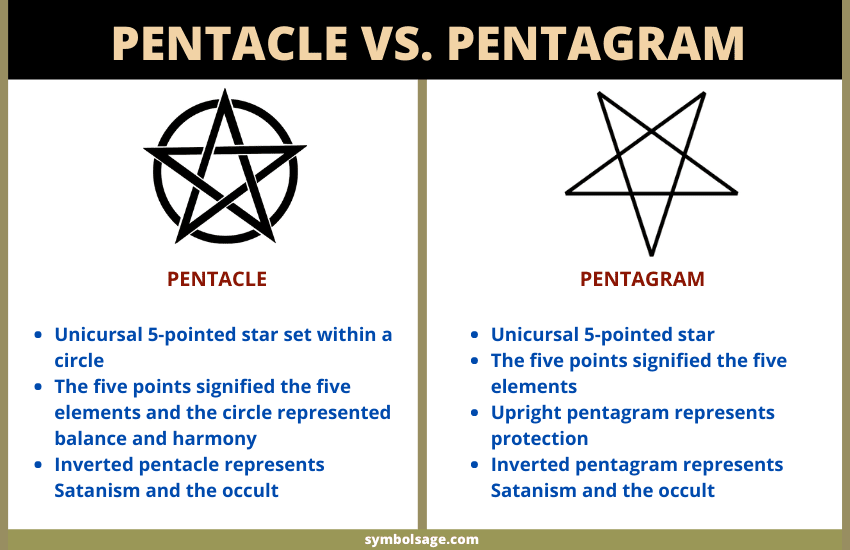
The five-pointed star, known as the pentagram, appears in the symbolism of Sumerians, Egyptians, and Babylonians, and was used as a talisman against evil forces.
In 1553, it became associated with the harmony of the five elements: air, fire, earth, water and spirit. When the pentagram is set within a circle, it’s called a pentacle.
An inverted pentagram signifies evil, as it’s thought to represent a reversal of the proper order of things. In modern times, the pentagram is often associated with magic and witchcraft and is commonly used as charms for prayers and spells in Wicca and American neo-paganism.
3. Yin-Yang
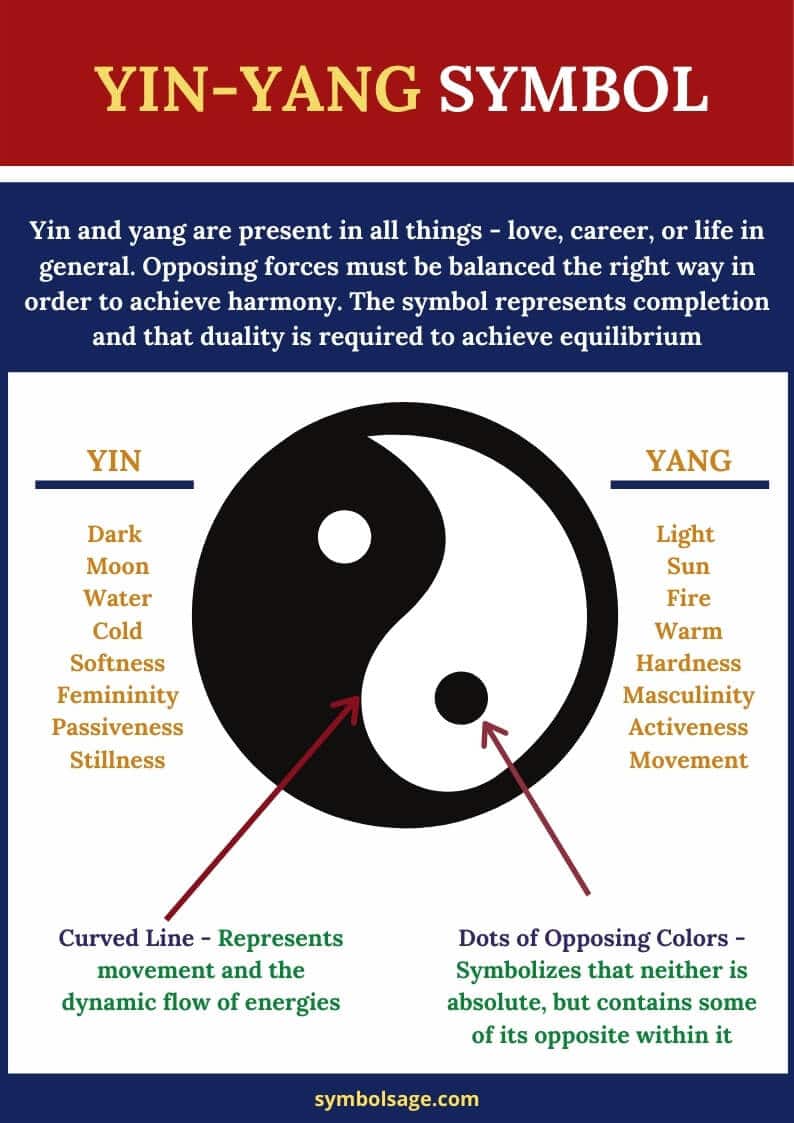
In Chinese philosophy, yin-yang represents two opposing forces, where harmony can only take place when there’s a balance between the two.
While the yin represents female energy, the earth and darkness, the yang symbolizes male energy, heaven, and light.
In some contexts, the yin and yang are seen as the qi or vital energy in the universe. Its symbolism is recognized almost anywhere in the world and continues to influence beliefs in astrology, divination, medicine, art and government.
4. Swastika
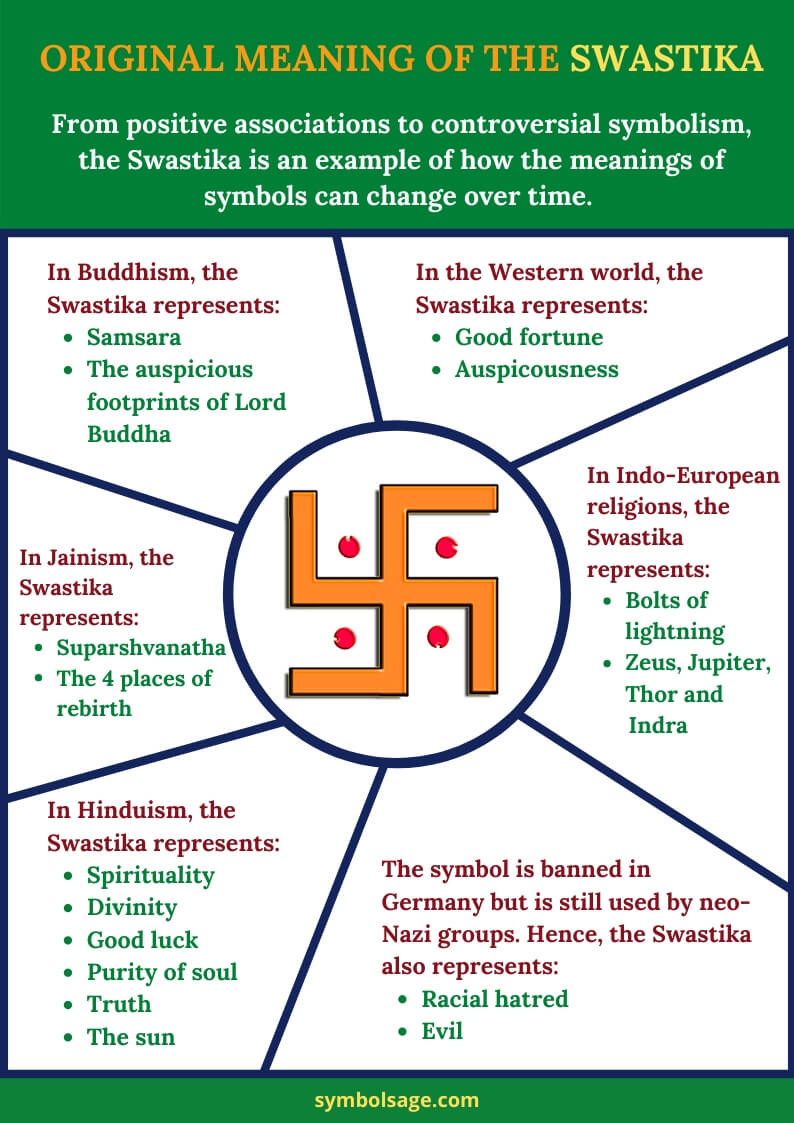
Although today it’s viewed as a hate symbol, originally the swastika symbol had a positive meaning and prehistoric origins.
The term is derived from the Sanskrit svastika, which means conducive to well-being, and it was long used by ancient societies including those in China, India, Native America, Africa, and Europe. It also appears in early Christian and Byzantine art.
Unfortunately, the symbolism of the swastika was ruined when Adolf Hitler adopted it as an emblem of the Nazi Party, associating it with fascism, genocide, and World War II.
It’s said that the symbol suited their belief in the Aryan race, as ancient Indian artifacts featured the swastika symbol.
In some regions, the swastika remains a potent symbol of hate, oppression, and racial discrimination, and is banned in Germany and other European states.
However, the symbol is slowly reclaiming its original meaning, as a result of growing interest in the ancient civilizations of the Near East and India.
5. Eye of Providence
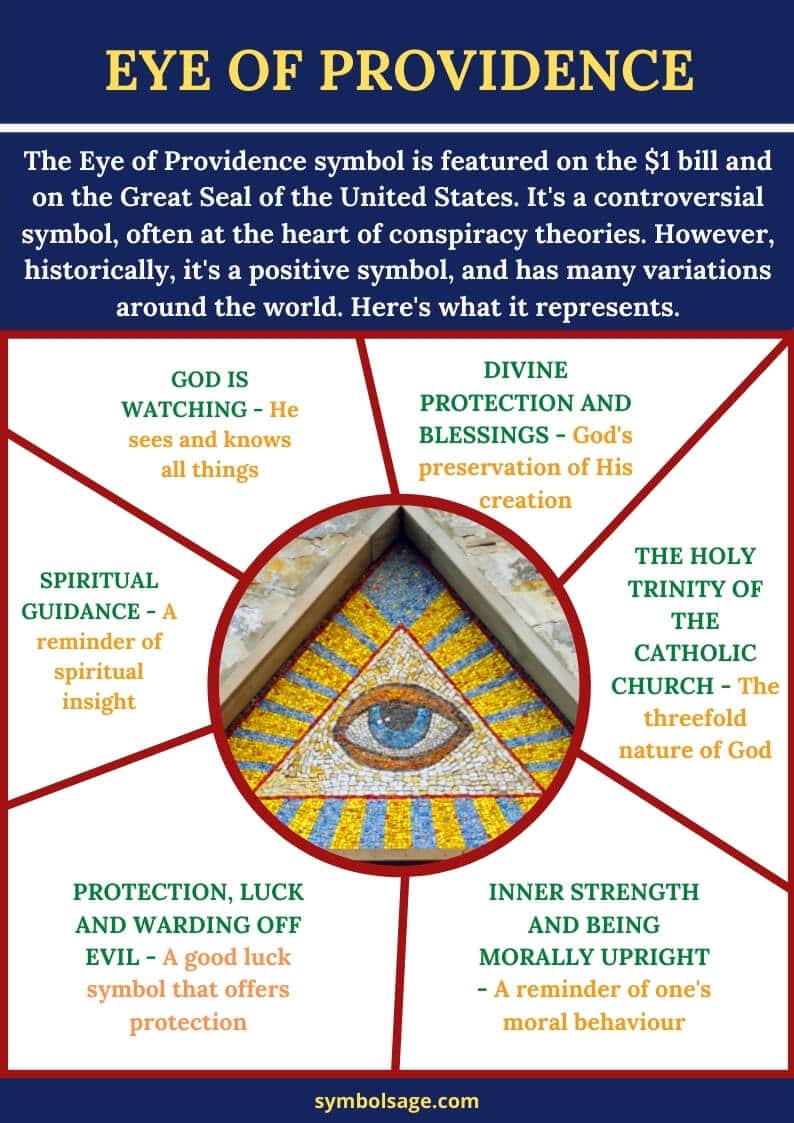
A mystical symbol of protection, the Eye of Providence is depicted as an eye set within a triangle—sometimes with bursts of light and clouds.
The word providence denotes divine guidance and protection, implying that God Is Watching. The symbol can be found in religious art of the Renaissance period, particularly the 1525 painting Supper at Emmaus.
Later, the Eye of Providence appeared on the Great Seal of the United States and on the back of the American one-dollar bill, implying that America is being watched over by God.
Unfortunately, this has since become a subject of controversy as conspiracy theorists insist that the founding of the government was influenced by Freemasons, who also adopted the symbol to represent the watchfulness and guidance of a higher force.
6. Infinity Sign
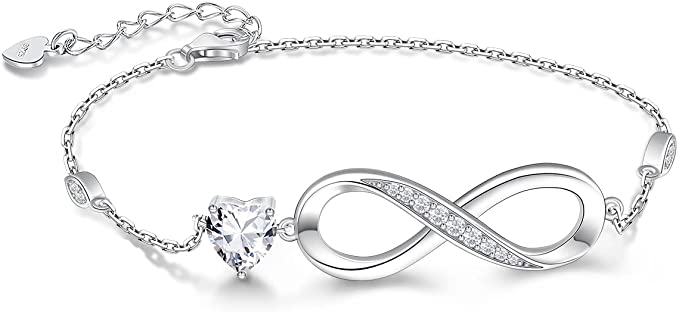
Originally used as a mathematical representation of an infinite number, the infinity sign was invented by English mathematician John Wallis in 1655.
However, the concept of being unbound and endless has been around long before the symbol, as ancient Greeks expressed infinity by the word apeiron.
Nowadays, the infinity symbol is used in a variety of contexts, especially in mathematics, cosmology, physics, arts, philosophy, and spirituality. It’s even widely used as a statement of eternal love and friendship.
7. Heart Symbol
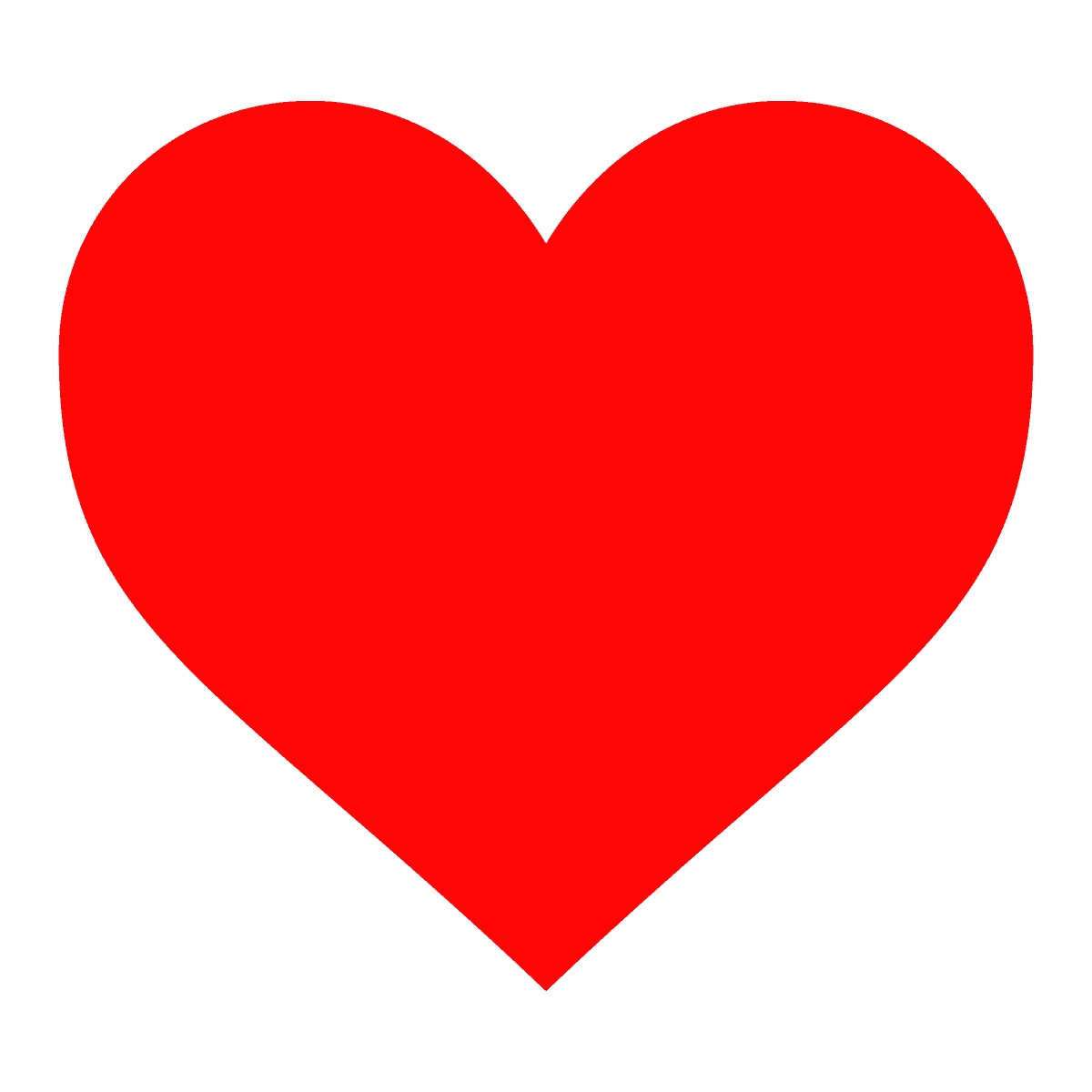
From text messages to love letters and Valentine’s Day cards, the heart symbol is used to represent love, passion and romance. In fact, the heart was linked to the strongest emotions since the time of the Greeks.
However, the perfectly symmetrical heart looks nothing like the real human heart. So, how did it turn into the shape we know today?
There are several theories and one of them includes the heart-shaped plant, silphium, which was used by the ancient Greeks and Romans as birth control.
Some speculate that the herb’s association with love and sex led to the popularity of the heart-shaped symbol.
Another reason may come from ancient medical texts, which described the shape of the heart as having three chambers and a dent in the middle, resulting in many artists attempting to draw the symbol.
The earliest illustration of the heart symbol was created around 1250 in the French allegory The Romance of the Pear. It depicted a heart that looks like a pear, eggplant, or pinecone.
By the 15th century, the heart symbol was adapted for many whimsical and practical uses, appearing on the page of manuscripts, coats of arms, playing cards, luxury items, sword handles, religious art, and burial rites.
8. Skull and Crossbones

Commonly associated with danger and death, the skull and crossbones are often depicted on poison bottles and pirates’ flags.
When used on a positive note, it becomes a reminder of the fragility of life. At one stage in history, the symbol became a form of memento mori, a Latin phrase that means remember death, adorning tombstones, and mourning jewelry.
The skull and crossbones also appeared in Nazi SS insignia, the Totenkopf, or the death’s head, to signify one’s willingness to sacrifice one’s life for a greater purpose.
It was even incorporated into the British regimental emblem to represent the motto of death or glory. In Mexico, the celebration of Día de Los Muertos showcases the skull and crossbones in colorful designs.
9. Peace Sign

The peace sign originated from flag signals that meant nuclear disarmament, representing the letters N and D of the semaphore alphabet used by sailors to communicate from a distance.
It was designed by Gerald Holtom specifically for a protest against nuclear weapons in 1958. Later, anti-war protesters and hippies used the symbol to promote peace in general.
Nowadays, it continues to be used by many activists, artists, and even kids around the world to send an uplifting, powerful message.
10. Male and Female Symbols
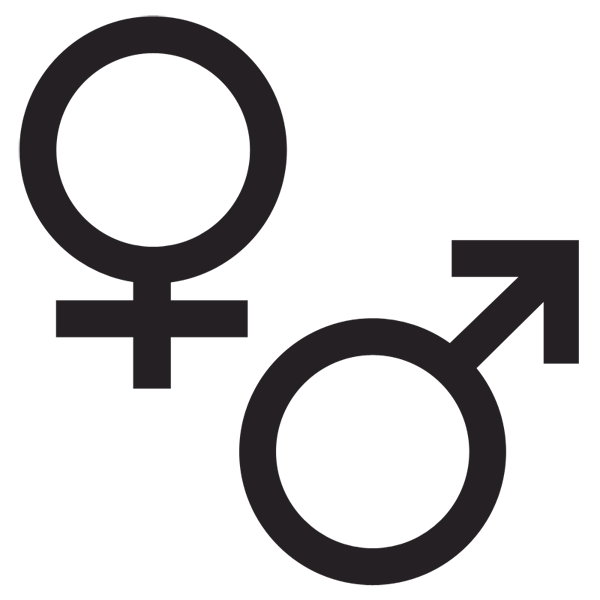
The male and female symbols are widely recognized today, but they’re derived from the astronomical signs of Mars and Venus.
Greek letters can be transformed into graphic symbols, and these symbols are the contractions of the Greek names of the planets—Thouros for Mars, and Phosphoros for Venus.
These heavenly bodies also became associated with the name of gods—Mars, the Roman god of war, and Venus, the Roman goddess of love and fertility.
Later, their astronomical signs were used to refer to the planetary metals in alchemy. Iron was harder, associating it with Mars and the masculine, while copper was softer, linking it with Venus and the feminine.
Eventually, the astronomical signs of Mars and Venus were also introduced in chemistry, pharmacy, and botany, before being used in human biology and genetics. By the 20th century, they appeared as male and female symbols on pedigrees.
Nowadays, they’re used to represent gender equity and empowerment, and it’s likely that they’ll continue to be used for more centuries to come.
11. The Olympic Rings

The most iconic symbol of the Olympic Games, the Olympic Rings represent the union of five continents—Australia, Asia, Africa, Europe, and America—towards the shared goal of Olympism.
The symbol was designed in 1912 by Baron Pierre de Coubertin, the co-founder of the modern Olympic Games.
Even though the symbol is relatively modern, it reminds us of the ancient Olympic Games. From the 8th century BCE to the 4th century CE, the games were part of a religious festival in honor of the Greek god Zeus, held every four years at Olympia in southern Greece.
Later, they were banned by Roman Emperor Theodosius I as part of his efforts to suppress paganism in the empire.
By 1896, the long-lost tradition of ancient Greece was reborn in Athens, but this time, the Olympic Games became an international sports competition.
Therefore, the Olympic Rings resonate with the message of unity, symbolizing the time for sportsmanship, peace, and breaking barriers. The symbol carries hope for a more harmonious world, and it’ll likely continue to do so in the future.
12. Dollar Sign
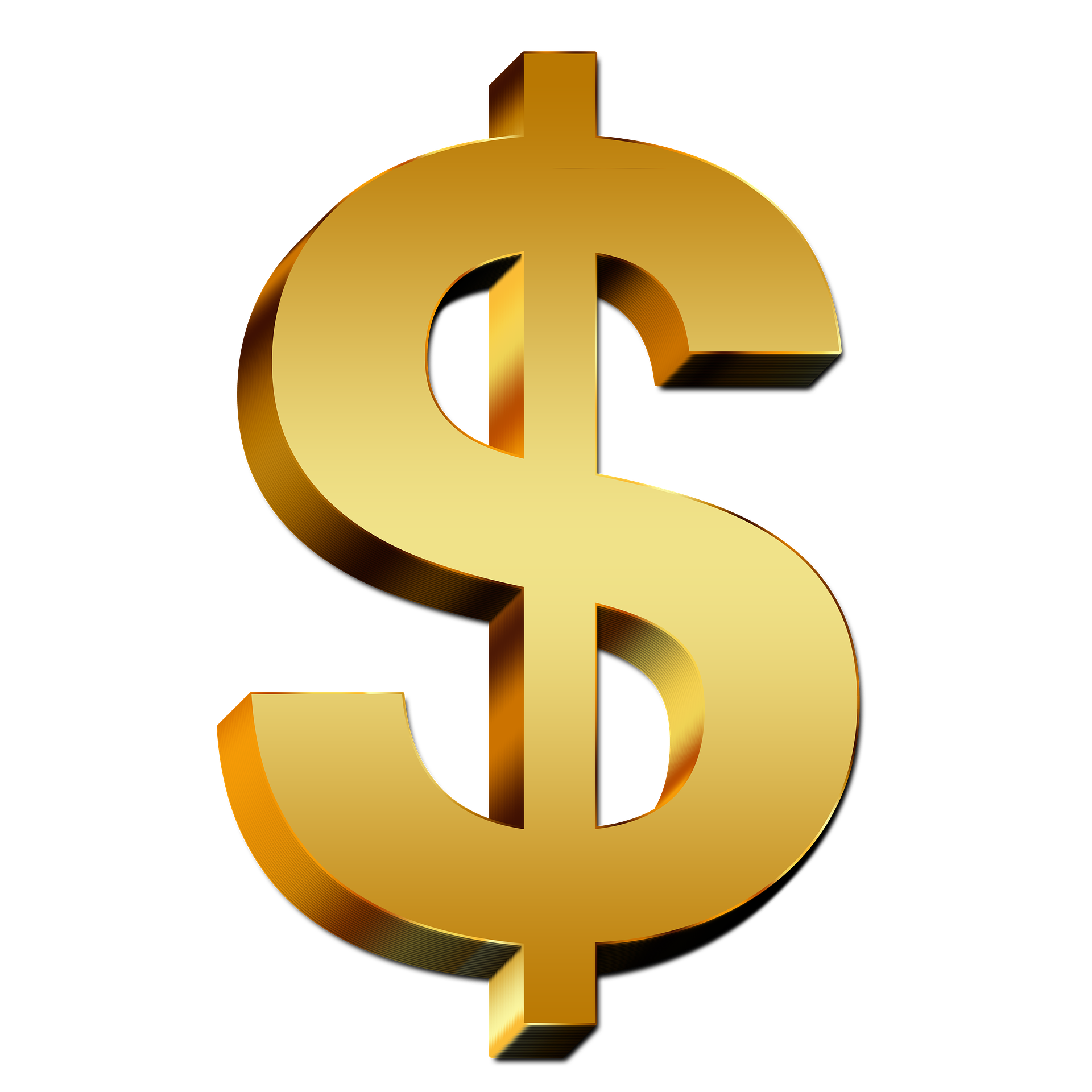
One of the world’s most potent symbols, the dollar sign is symbolic of far more than US currency. It’s sometimes used to represent wealth, success, achievement, and even the American dream.
There are several theories as to where this symbol came from, but the most widely accepted explanation involves the Spanish peso or peso de ocho, which was accepted in colonial America during the late 1700s.
The Spanish peso was often shortened into PS—a P with a superscript S. Eventually, the vertical line of P was left written over the S, which is similar to the $ symbol.
Since the dollar sign somehow appeared in the Spanish peso, which was of the same value as the American dollar, it was adopted as the symbol for US currency. Therefore, the S in the dollar sign has nothing to do with the US, as in the United States.
13. Ampersand
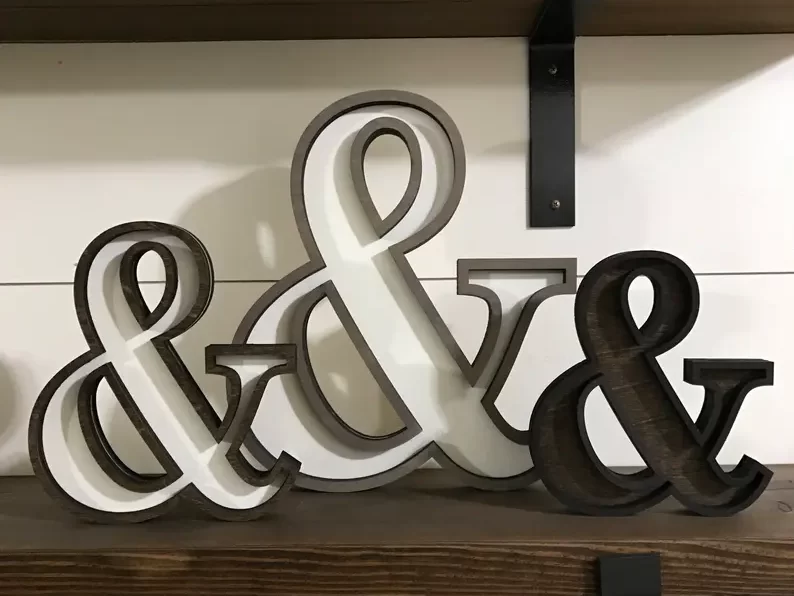
The ampersand was originally a ligature of the cursive letters e and t in a single glyph, forming the Latin et, meaning and. It dates back to Roman times and has been found on a piece of graffiti in Pompeii.
In the 19th century, it was recognized as the 27th letter of the English alphabet, coming right after Z.
Even though the symbol itself is ancient, the name ampersand is relatively modern. The term is derived from an alteration of per se and and.
Today, it remains the typographical equivalent of wedding rings that are used to mark permanent partnerships. It can also be interpreted as a symbol of union, togetherness, and continuation, especially in the tattoo world.
Wrapping Up
The above symbols have withstood the test of time, and play a role in religion, philosophy, politics, commerce, art, and literature.
Many of them give rise to debate on their origin but remain powerful because they simplify complex ideas, and communicate more effectively than words.
Similar Articles:
15 Most Controversial Symbols in the World and Their Meanings
19 Popular Symbols of Power with Their In-Depth Meaning
12 Popular Symbols of Unity and Their Meanings
15 Powerful Symbols of Life and What They Mean
Top 14 Sacred Symbols and Their Meanings
